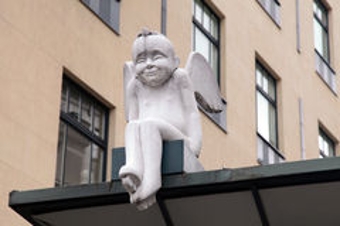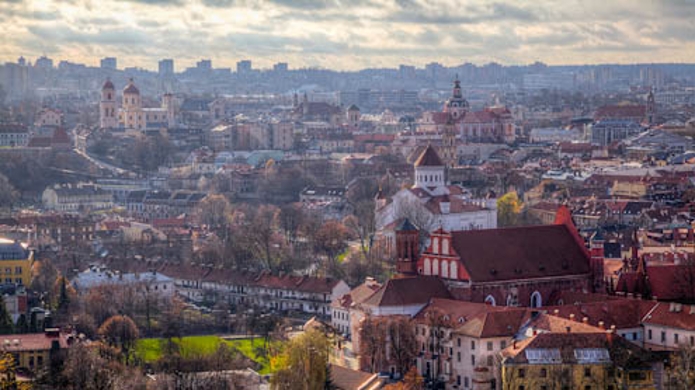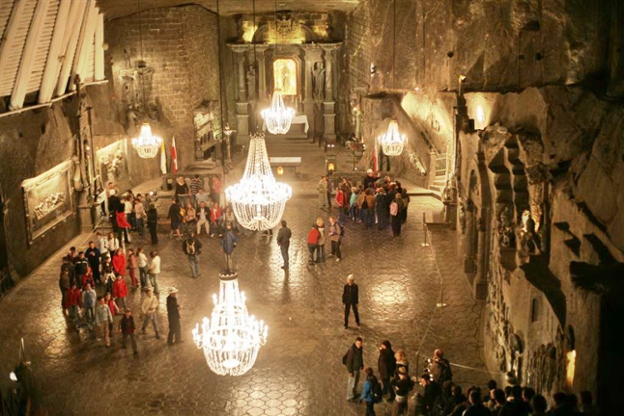Week 10: Farewell from Lithuania
For this final post from Lithuania it seems both appropriate and expected to write about my final reflections on the country and on my experience over the last two and a half months. It is difficult to find the words, to sum up such a varied and meaningful experience in so short a space. I am of course unable to touch on everything, or to do the country justice, but I do have a few thoughts to share.
Vilnius is not a place that reaches out and grabs one in the same way that Rome and Paris do. Most cannot pinpoint Vilnius on a map, or even Lithuania for that matter (in a recent parody song about the European Union on John Oliver’s HBO show, one of the performers sang “and where the [expletive] is Lithuania?!”). Vilnius has some masterpieces of (mostly Baroque) architecture (churches) that absolutely should be seen, but tourists don’t flock here like they do to, say, Amsterdam. That’s because Lithuania is not a country that will blow you away over a three day trip, but rather is a country that will pull you in with its charm. Take Vilnius, for instance. Throughout the city there are cherub statues, sitting on top of grocery stores, restaurants, cafes, and the like. These little angels always have big smiles on their faces, and they often have a quirky side. Every day I am greeted by a cherub sitting cross legged wearing rollerblades. These statues to me are a good representation of what Lithuania has to offer. They don’t stick out - a tourist is not going to come to Vilnius to see small angel statues - but if one is willing to become engrossed in this place as I have done, beyond the frantic paced sightseeing that generally accompanies an American vacation to Europe, they will discover a place full of small charms.

The same can be said of the Lithuanian people. On a bus to Warsaw recently I was talking to a Lithuanian woman who described the national character of her countrymen as “sad.” In my dealings with them, I have not found Lithuanians sad. As I wrote about initially, they are very reserved with strangers (going to Rome for a few days and dealing with Italians further highlighted this trait). But once you get to know them personally, they are quick to laugh. The director of VIL IAS is one of the most eager storytellers I have ever had the pleasure of knowing, and he has an old Lithuanian/Russian/Polish/Estonian/Latvian joke for every occasion. Lithuanians may seem cold at first, but get to know them and they will inevitably charm you. I do admit that my perspective may be skewed as to the happiness of Lithuanians, as I have primarily interacted with younger people who did not grow up under Soviet occupation.
Pessimistic seems a more appropriate descriptor to me. There is undoubtedly a pessimism that social reform can be achieved. I heard the refrain of “that will never work in Lithuania” many times, when discussing the alleviation of corruption, the increasing of pro bono opportunities, or the possibility of same-sex marriage. One can hardly blame Lithuanians for this pessimism, as the country has not fared well for two-hundred years, almost always under the yoke of some foreign power, usually Russia, who left the people oppressed. Tensions with Russia are still high. In recent weeks many in the United States have questioned Donald Trump’s relationship with Russia and with Vladimir Putin specifically. People in Lithuania are following that story even more closely. A couple of weeks ago there was a celebration of Lithuanian/American relations in Vilnius’ Vasingtono Aikste (“Washington Square”). In 1940, when the Baltics were invaded by the Soviet Union, only the United States recognized Baltic sovereignty, and Lithuanians remain grateful. Many members of the U.S. and Lithuanian militaries were present, as well as Lithuanian politicians and about a dozen members of the U.S. Congress. It is clear that Lithuania wants to westernize and increase its ties to the United States, and there is a fear that without continued U.S. support Russia will attempt to pull Lithuania back into its sphere of influence. On the opposite side, many Russians still live in Lithuania, and if my roommate is any indication, they are not happy about the direction Lithuania is going.
The lifeblood of Lithuania traditionally is not the cities, but the villages. Vilnius is becoming more cosmopolitan, but the villages maintain a quintessentially Lithuanian character. I was lucky enough to visit some of the smaller towns, and have previously written about them. The next few years are interesting as to where Lithuania will go. These days, more and more are flocking to the cities, to Vilnius, to Kaunas, and the small villages are being drained. I have seen this recently in the work of a Lithuanian photographer, whose work focuses on life in Lithuanian villages and laments the urbanization of the country. Nowhere is this tension more evident than in a place in the center of the new town. Across the Neris from the Vilnius city center is an area of booming modern architecture, where skyscrapers holding the offices of internet providers look down upon expansive shopping malls. There is a small area right in the middle of these towering skyscrapers where the paved roads turn to dirt, and the shopping malls give way to homes built in the Nineteenth Century. Most lack running water, or indoor plumbing. Many house multiple families, and have housed those families for generations. These are people who have refused to sell their homes, have been pressured by commercial interests to sell so that the property can be bulldozed and the Twenty-First Century can claim it. Being in that place, looking at the contrast, one gets a sense of where Lithuania has been for so long, and of where it appears to be going.

The experience is undoubtedly one that will last with me for my life, and I am very grateful for the opportunity to come to east Europe. I hope to continue working with VIL IAS from stateside where my schedule allows, and I definitely plan to remain updated on goings on in this country, with its beautiful wooded areas, rolling green hills, and clear blue lakes where one can easily become entranced.
On a completely different note, as my work wrapped up, I took a trip with my mother to my ancestral homeland of Poland, where we spent two days in Warsaw and two days in Krakow. It was good to see constant reminders of the historical relationship between Poland and Lithuania, with many statues depicting the Polish and Lithuanian emblems side by side. It only served to increase my connection to the place where I spent this summer. The horrors of World War II still hang over both cities, particularly Warsaw, which was almost completely destroyed during the War. Warsaw’s resilience is astounding. At the beginning of 1939, 1.3 million people lived in Warsaw. By the start of 1944, that number was down to 900,000. After the defeat of the Warsaw Uprising, the city was in ruins and fewer than 200,000 called the city home. Today, it is once again the largest city in Poland with 1.7 million residents and appears to be a very successful modern city. In Krakow, we visited the Wieliczka Salt Mines, which produced salt from the Thirteenth Century until 2007. The mines stretch almost 300 kilometers, and were absolutely amazing, with huge chapels carved out of salt hundreds of meters underground. There was more to see on this trip than I could possibly talk about here, but I would love to say more in real life to anyone who is interested.

I hope that this blog has been entertaining and educational in equal measure. Farewell from (turns out not so sunny) Lithuania!